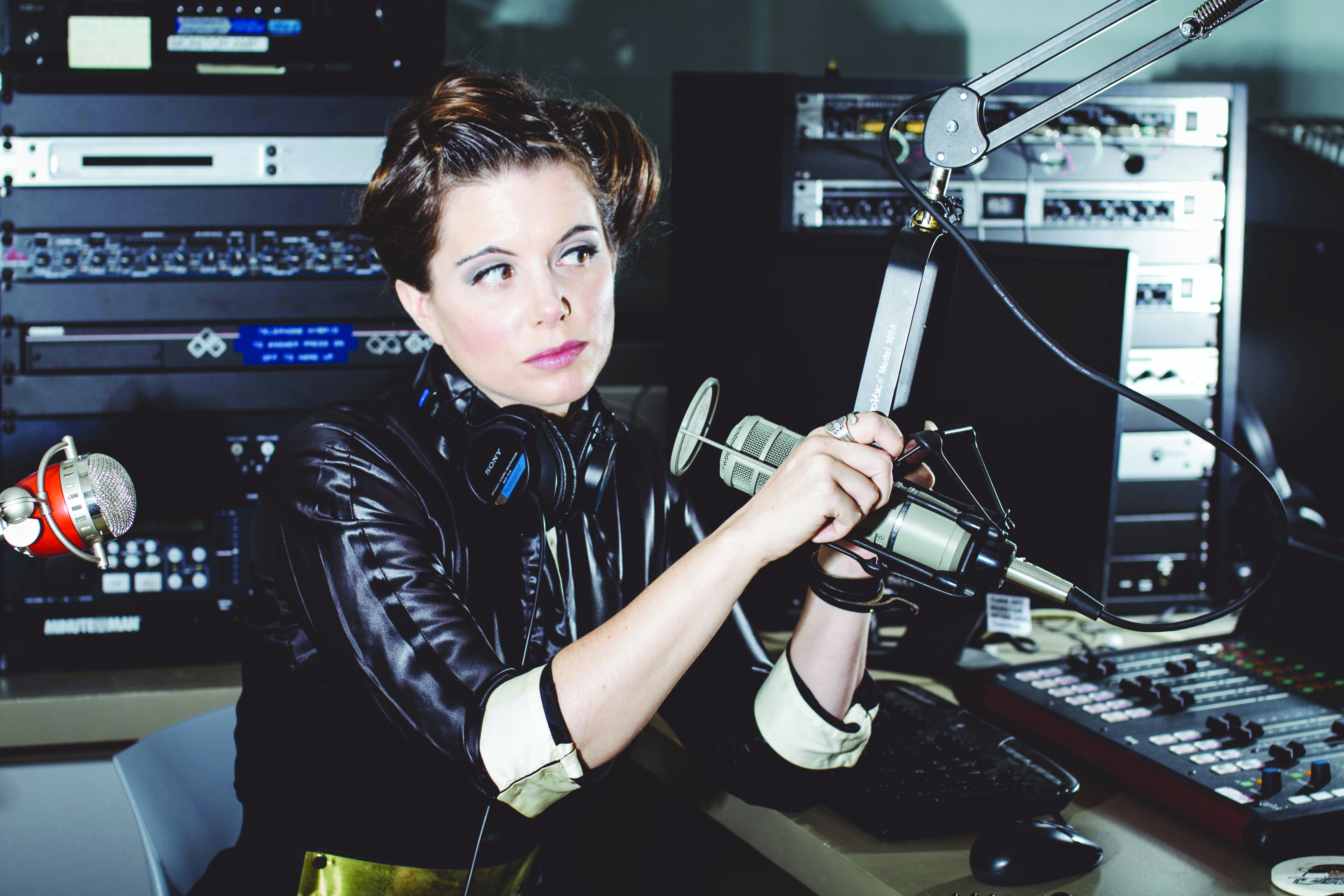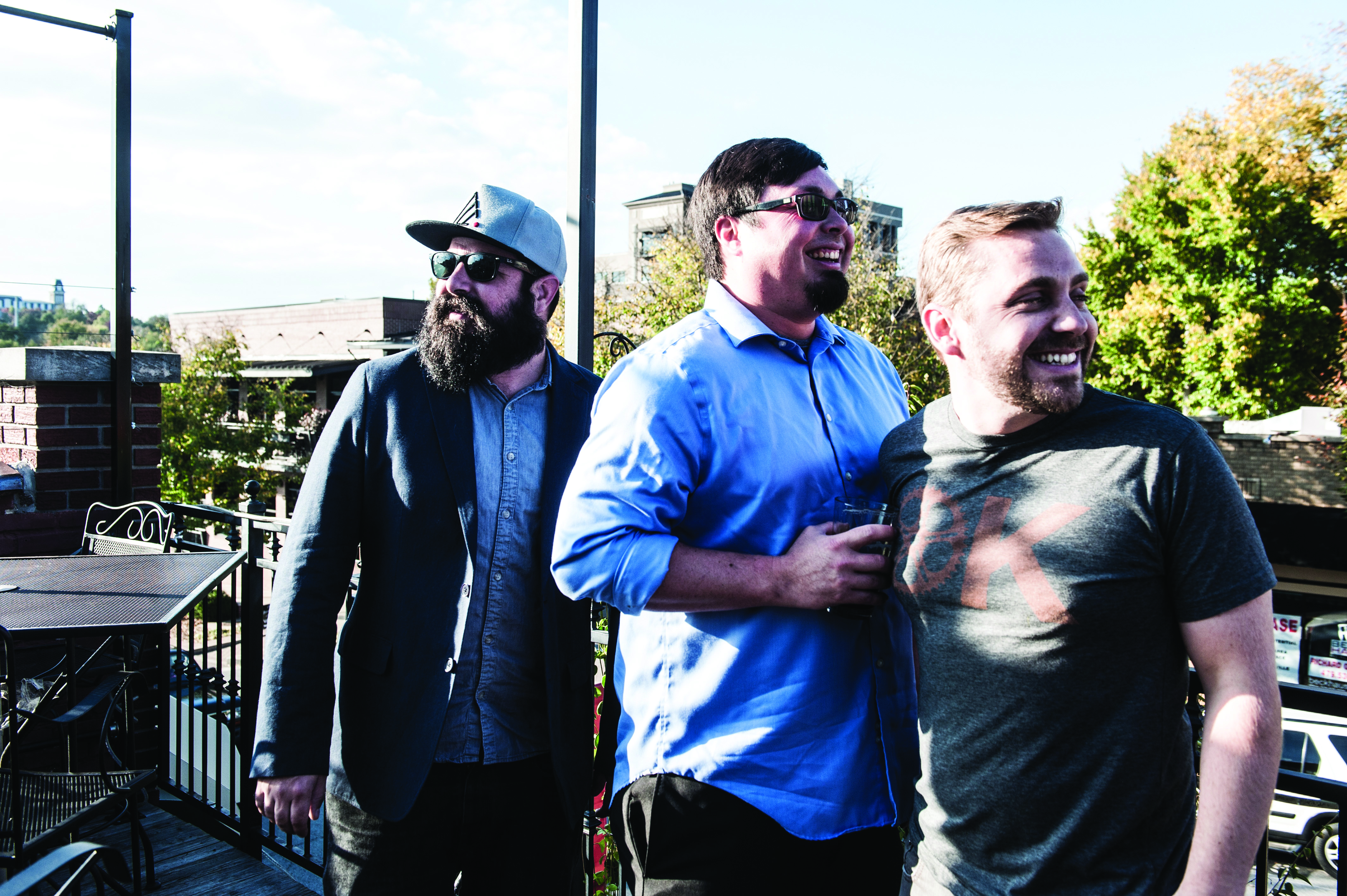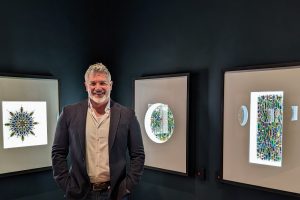CONVERGENCE: Katy Henriksen, host of KUAF’S “Of Note,” draws from a lifetime of experience to bring classical music to the masses.

WORDS / KODY FORD
PHOTO / SOPHIE BAUER
Music is an inescapable part of the human experience. Blaring from the speakers in your car. Moving the hero of your favorite film closer to the climax. Breaking through the hum of an evening’s conversation at your local Applebee’s. The love of music is almost innate in our species. It’s the friend who lifts your spirits when the party starts, the hand who consoles you in a time of heartbreak, the courier of emotions great and small. And it all starts with a single note.
***
During the 20th century, music reached its apex as a commodity. The decades saw a rapid evolution and diversification for music — blues, jazz, rock ‘n’ roll, R&B, hip-hop — so many genres and subgenres it almost became dizzying. During this time, classical music fell from the public consciousness, but never vanished. In fact, it endured and underwent its own evolution and diversification, although for a much smaller audience. While names like Bach, Beethoven and Brahms come to mind immediately, those who follow classical music closely know it as being far more modern and relevant than you might think. That’s where Katy Henriksen comes in.
As the host of “Of Note with Katy Henriksen” on KUAF 91.3, her job is to sift through centuries of music and deliver a daily experience for her listeners that is entertaining, enlightening and eclectic. It’s not an easy job, but it is one that she holds dear.
“The music I play can offer solace in a time when everyone’s got all this craziness going on in their lives,” she said. “It’s a way to tune in anywhere – on a phone, a computer, a radio dial – and you can live in that piece of music for a while. And maybe it’s a very peaceful piece that lets you breathe or maybe it’s something very challenging. It engages you. You can engage with music different than any other form. The way it hits your brain. The way you get enveloped in it. And I love being able to offer that to everyone. Classical music isn’t one thing. It’s a lot of things. I want to represent all of that.”
Creating a radio program is no easy process. It involves research, technical expertise and good instincts. While some stations still broadcast live, Henriksen follows the more modern method of recording and programming her show before it airs at 11 a.m. on Monday through Friday. She pieces each episode together like a puzzle to fill her allotted 54 minutes. Each day features a highlighted work that averages around 35 minutes long and then she chooses accordingly for the rest of the program. Recently, she has incorporated interviews as well.
The episodes are rebroadcast online on KUAF 2 each evening at 6 p.m. She chooses an additional song for this. Also, she is responsible for the KUAF Sunday Symphony airs 7-9 Sunday nights as well as 1 p.m. Sundays on KUAF 2. Last May, she and Kyle Kellams co-hosted “Mozart at the Museum,” a live broadcast of a concert by Walton Arts Center’s Artosphere Orchestra at the Crystal Bridges Museum of American Art.
Given the dynamic nature of classical music and constant offerings, culling down her musical choices requires Henriksen to undertake extensive research on what is new in classical music by reading blogs like NPR Classical’s “Deceptive Cadence” blog or the Brooklyn Rail, a paper she once wrote for, along with more traditional media outlets like the New York Times and The Guardian. She follows labels Deutsche Grammophon, Sony Classical Harmonia Mundi, Bridge Records, and the expansive Naxos label.
“Sometimes people don’t know what goes into putting a program together because it’s not like I’m just pulling CDs off the rack and like, ‘oh, this is 20 minutes, this is 15’ and such. I’m thinking about all sorts of things – different eras, different instrumentation, different types of performers – and all that goes into how I put together my programming because I want it to be really diverse and represent the whole realm of classical music. It’s the largest genre of western music because it’s been going so long. A lot of things can fit into that.”
This is an impressive feat, especially considering that this is her first professional job in radio. However, it is one that she has spent a lifetime preparing for.
***
The daughter of Mark & Carol Widder of Fayetteville, Henriksen has lived with music her entire life. Her grand-father was chair of the music department at the University of Arkansas, her grandmother directed the strings program at Fayetteville High School, her mother is a multi-
instrumentalist and her maternal grandfather was a jazz and ragtime pianist. Everything from Mozart to Joni Mitchell filled the Widder household. This mix of old and modern instilled Henriksen with a fascination for a variety of genres.
“Music was a part of everyday life,” Carol Widder said. “We had all kinds – classical, jazz, world music. I always loved Paul Simon and Janis Joplin and Joni Mitchell. And I think that’s where Katy gets it. She’s experienced it all and loves it so much.”
At age six, she started violin lessons and played in youth orchestras growing up. In junior high she started voice and went to be all-region and all-state for choir. When she enrolled at the University of Arkansas-Fayetteville, she majored in voice, but this quickly changed after realizing that she only had two career paths — educator or performer — a choice that felt too constrictive so she decided to blend her love of music and writing together to become a journalist. This switch in majors came just before the massive loss of readership and wave of layoffs in print journalism in the early 2000s. The entire field had begun to redefine itself, but she wasn’t shaken. As an undergrad, Henriksen served as the Features editor for the Arkansas Traveler, the student paper at the UA, and as a general rotation DJ for the newly formed KXUA student radio station. She interviewed bands, wrote columns and after graduation, she enrolled in the MA program in Journalism at the school, where she expanded her skill set by focusing on media, gender studies and documentary film.
Growing up, Henriksen had always played it safe, but in 2004 she took the leap and moved to Brooklyn. After a brief tenure at The Strand Bookstore, she got a job in publishing and at night wrote about music for any media outlets such as Venus Zine, Pop Matters, and the aforementioned Brooklyn Rail.
“No one had any money,” she said. “I was doing it because I wanted to interview these awesome musicians and have this experience. All the while I’d go to my office job in publishing so I can pay the rent and everything.”
After a few years, she returned home to Fayetteville. Her publishing and journalism experience didn’t open many doors at first. She was days away from starting a job as a hostess at a local restaurant, when she received a callback from the University of Arkansas Press. She worked her for a few years, but never lost track of her goal of becoming a full-time music journalist.
In the spring of 2011, long-time KUAF Classical Music director PJ Rubowski retired. Henriksen kept her eyes open for job listings. She describes herself as an “NPR kid,” who was raised on All Things Considered and Morning Edition. While she desired a job at the station, manager Rick Stockdell wasn’t looking to fill Rubowski’s chair as they were using a classical music streaming service, but after chatting with Henriksen, he began to change his mind. While he had known her since her days as a journalism student, her lack of professional radio experience didn’t make her an ideal candidate on paper, but he knew her family and her background. He decided to take a chance and make KUAF’s classical music coverage local again. After an extensive interview process, she was hired and given the task of creating a new show.
“KUAF aligned all my interests together,” Henriksen said. “Before I was floating around and doing all these different things. Now I get to highlight classical music and the arts for a public radio station with culture that reaches everyone for free. I’m bringing the concert hall to anyone whenever they want it, because it’s really expensive if you want to attend a concert, especially if you want to go to the big concerts. I’m very passionate about being able to offer that anyone who wants to listen to it and cultivating that.”
At first some people were surprised to see this music journalist take on such a monumental task, but those who knew her didn’t lose faith even as she struggled to find her “radio voice” and master the technical aspects of the job in the first few months. Stockdell would stop by and give her tips, which accelerated her learning curve.
“[I was] very supportive and I continue to be very supportive,” said Stockdell. “She was kind of ‘thrown into the water’ so to speak when she first started, but she’s worked hard and improved a lot since her early days of producing ‘Of Note’.”
While Henriksen plays the standards like Mendelssohn, she also features modern works by Richard Reed Perry of Arcade Fire and A Time for Three, the string trio who lit up the Artosphere Festival in Fayetteville last spring. Her main criteria for choosing songs is the musicianship, passion and emotional resonance of a tune.
“Classical music is for everyone and I want to show everyone that its available and accessible to everyone but not accessible in the sense that its easy,” she said. “It’s not always going to be easy to listen to. Sometimes art can be challenging but it’s also rewarding.”
Henriksen’s passions and interests have given “Of Note”’s listeners an experience that is unique and engaging. From Carthage to Mena, people are tuning in to hear her show and be transported into a concert hall they might never step foot in otherwise. A lifetime of experience has finally converged and Katy Henriksen couldn’t be happier about it.
FOLLOW: @OFNOTEKUAF





Comments